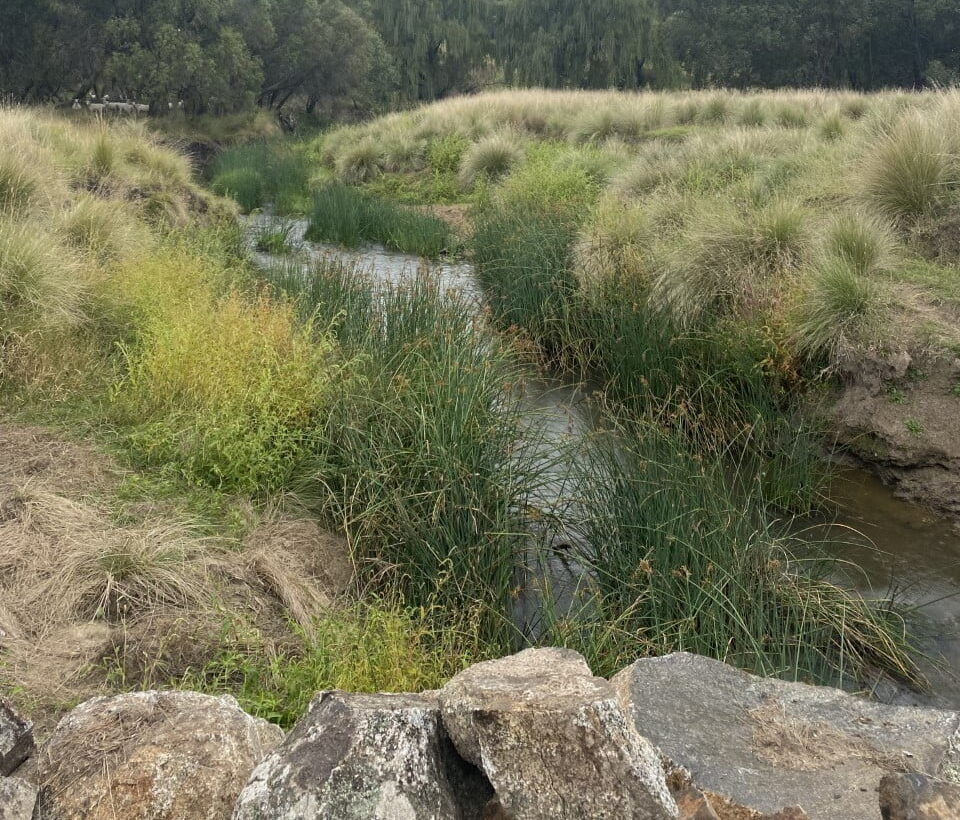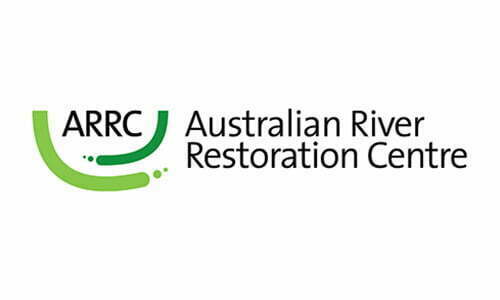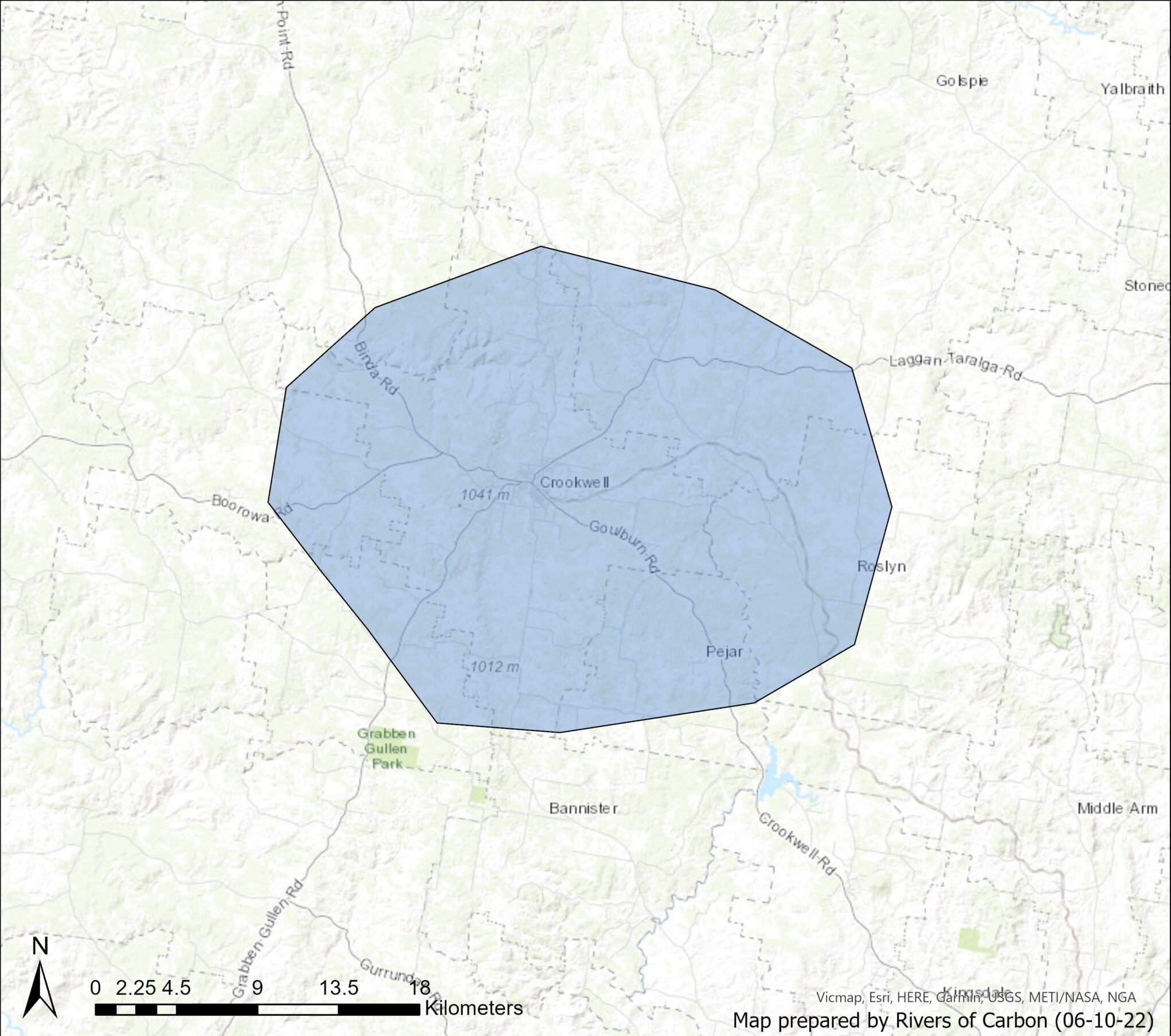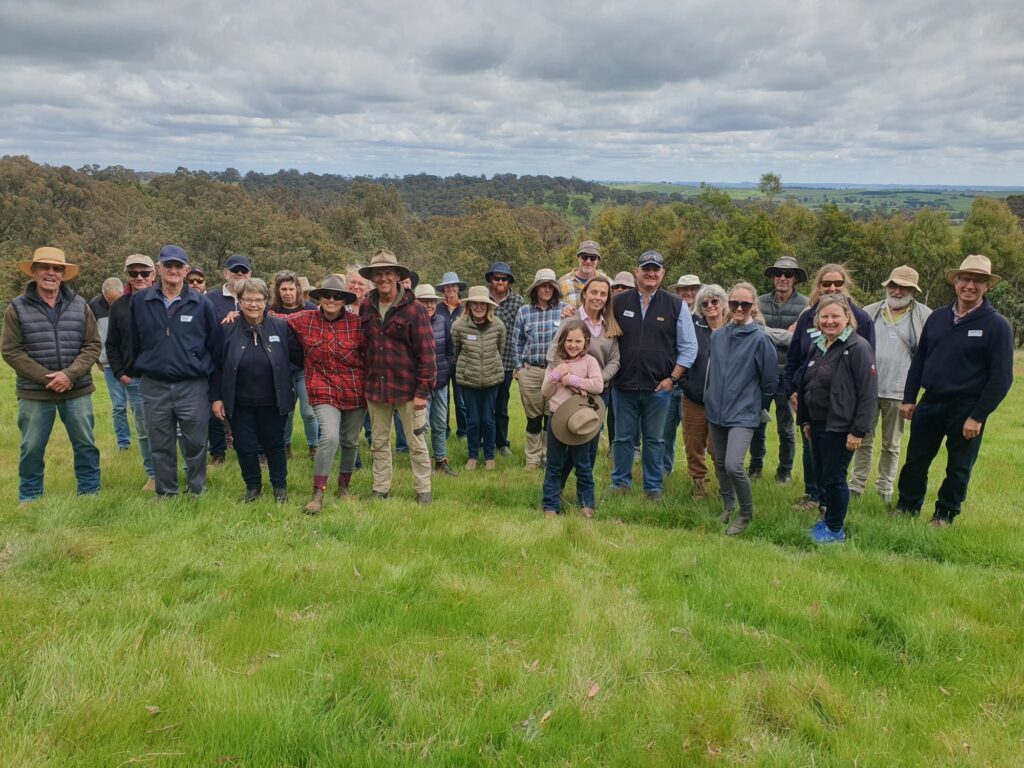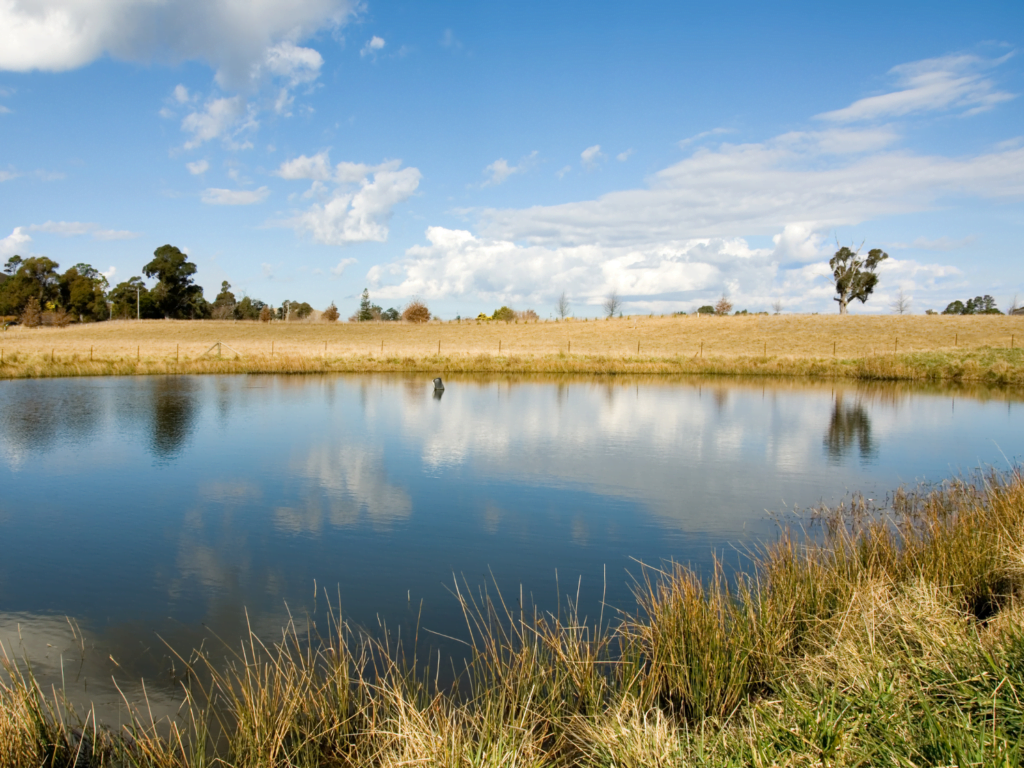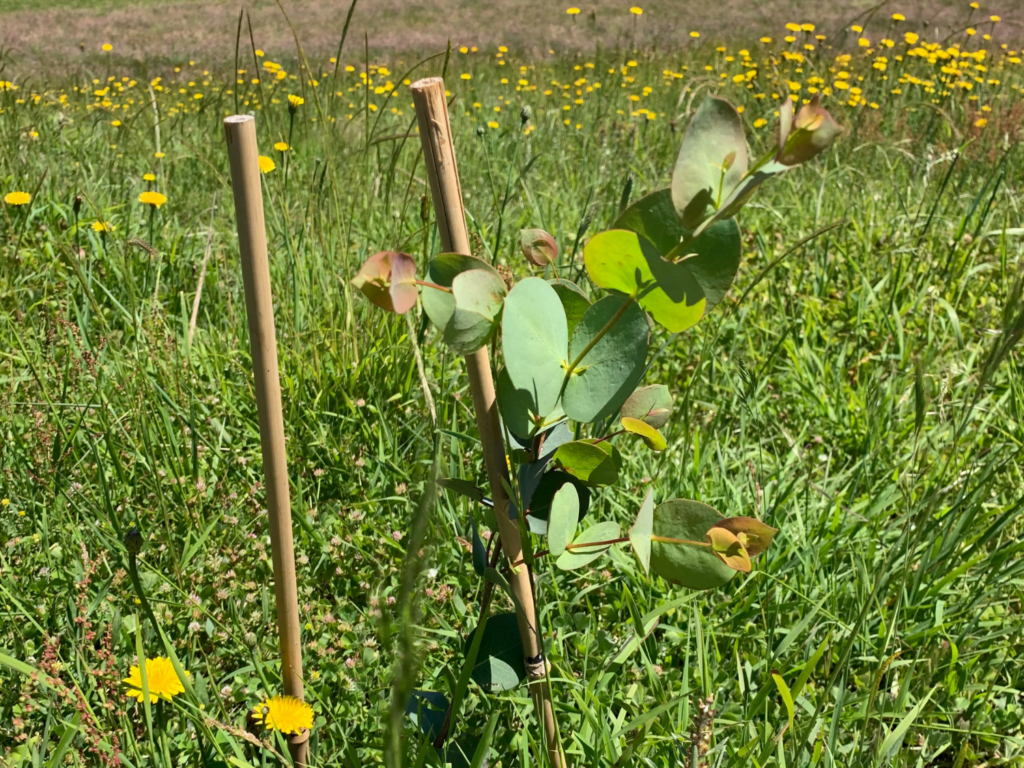We are honoured to work on the ancestral lands of the Gundangurra People and we recognise their continuing connection with, and knowledge about land, waters and community. We pay our respects to them and their cultures; and Elders past, present and emerging.
Adapted from: Welcome to Country & Acknowledgement of Country – Creative Spirits
River Dreaming image (right). Artist: Richie Allen (Ngunnawal/Kamilaroi), Traditional Aboriginal Owners Corporation.
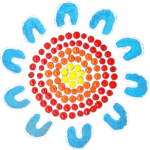
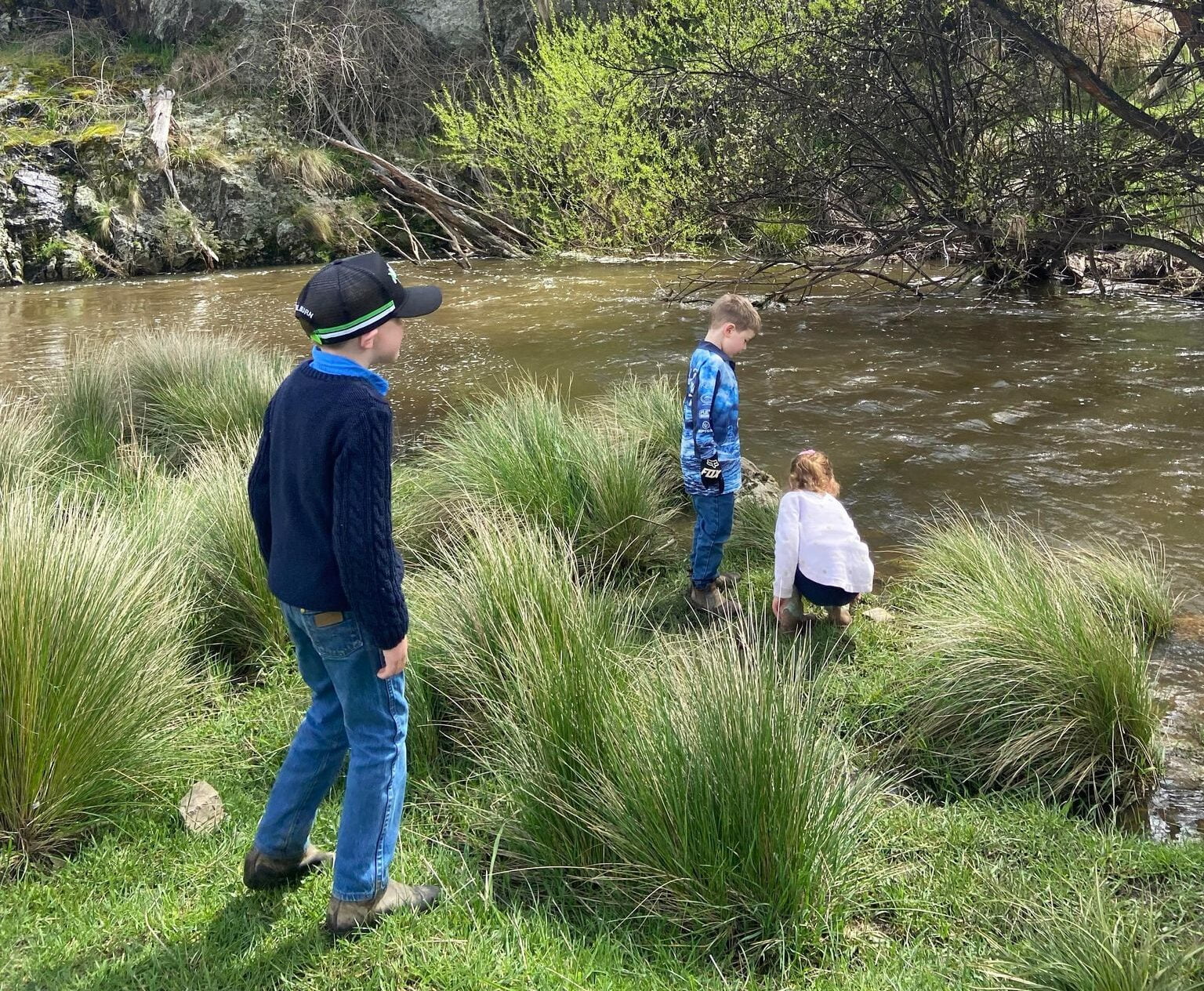
“Any river is really the summation of the whole valley. To think of it as nothing but water is to ignore the greater part.”
– Hal Borland
Why Crookwell?
The Crookwell area contains many tributaries to the Upper Lachlan catchment, providing water for towns, recreation and agriculture downstream. Aside from their utilitarian values, Crookwell waterways also provide important habitat for wildlife such as Platypus, Murray cod and the endangered Macquarie perch.
Many champion landholders in the Crookwell catchment have already undertaken on-ground works to improve waterways (within the context of sustainable agriculture), and Rivers of Carbon Crookwell will build on past projects such as RoC Goulburn and Grabben Gullen. Five more landholders will be engaged to protect and enhance 25ha of riparian areas by undertaking works such as fencing, installing alternative stock water, controlling weeds, undertaking small scale erosion control and planting tubestock to improve water quality and biodiversity.
RoC will also work in partnership with Landcare and other local groups, to facilitate workshops that encourage community participation, develop partnerships, connect people and raise awareness about the importance of looking after our creeks and rivers.

Outcomes we are aiming for:
![]()
Protect and restore 25ha of riparian land
![]()
Manage 5kms of waterways
![]()
Involve 5 landholders
![]()
Connection and enhancement of 300ha of remnant vegetation
![]()
Plant 1500 natives and 3km of direct seeding
![]()
Manage 2 erosion control remediation sites
![]()
Hold 2 community events
Want to get involved?
We would love to hear from you. Please check our map to see if you are within the Crookwell project area. If you are, get in touch!
Lori Gould, RoC Program Manager
✉️lori.gould@arrc.com.au
📞0439 030 058
Lucy Stuart, Project Officer
✉️lucy.stuart@arrc.com.au
📞0476 373 175

